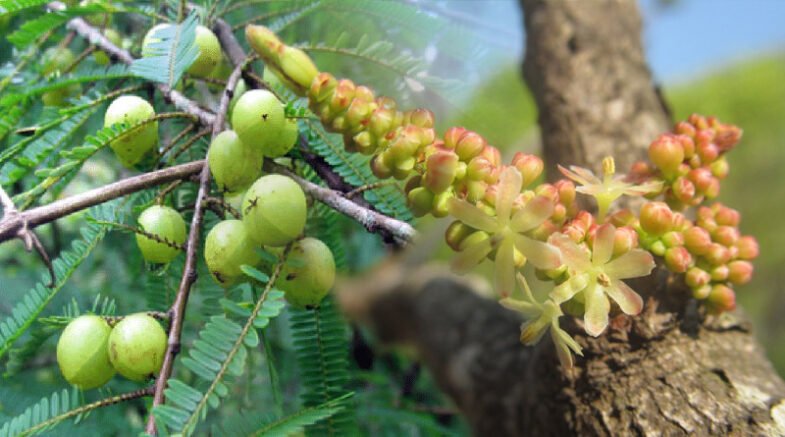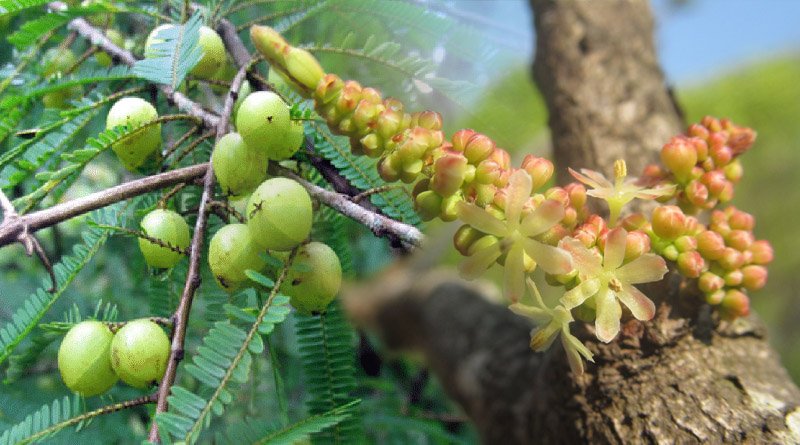The data revealed by WHO suggests some important facts, including fact that 80% of the population of underdeveloped countries frequently uses plants as a disease curing agent.

Phyllanthus emblica is a golden herb with a lot of medicinal and therapeutic potential. Human diseases are effectively cured by the pragmatic use of plants. In previous times, extracts from plants were used for the purpose of disease cure and treatment.
Fossil records entail the fact that plants had been used as therapeutic agents nearly sixty thousand years ago. The data revealed by the WHO suggests some important facts, including the fact that eighty percent of the population of underdeveloped countries frequently uses plants as a disease curing agent.
In addition, the Indian system of Ayurvedic medicines plays a significant role in treating distinguishable pathological conditions. In this system, different plants are used to cure diseased conditions. A plant named Phyllanthus emblica, (P. emblica), commonly known as Indian gooseberry, possesses a lot of therapeutic characteristics. Likewise, it is also known as amla.
Historically, P. emblica has been used since the Egyptian civilization. In Unani systems of medicine, Indian gooseberry is an important drug that acts as an antioxidant. It is very rich in minerals, vitamins, and other beneficial constituents.
Amla was also used significantly to treat a number of fatal diseases in Arabic and Sanskrit civilizations. The different parts of the Indian gooseberry plant, such as fruits, flowers, bark, roots, and seeds, are advantageous in the procurement of diseases. In one of the countries in the eastern part of Asia, India, amla is used as a pickle.
The mixture of P. emblica along with different crops is used as a diuretic, laxative, and refrigerant. Its fruit treats the pain in the stomach as well. Similarly, its bark contains tannin, proanthocyanidin, and leucodelphinidin.
This herb is also used to rejuvenate the human body. It raises the number of red blood cells. The fruit of Amla proves beneficial to treat cough, bronchial asthma, and bronchitis. It also treats dyspepsia, colic, flatulence, and ophthalmopathy.
Along with all the aforementioned diseases, it also cures skin diseases, leprosy, hematogenesis, anaemia, hepatopathy, and haemorrhages. Similarly, it treats fever and hair loss in an efficient manner. The other therapeutic properties of Phyllanthus emblica are as follows:
Antioxidant Activity of Phyllanthus emblica
Most of the studies have entailed the fact that many diseases are caused by disruption of anti-oxidants and pro-oxidants in the body. The increased generation of free radicals promotes scavenging activity that ultimately enhances the pro-oxidant condition.
On the other hand, Amla increases the anti-oxidation activity, which leads to a decline in the level of free radicals. The processes of respiration, metabolism, and immunity make the production of free radicals inevitable.
However, there always remains a particular balance between anti-oxidant and pro-oxidant levels in the body due to the antioxidant activity of P. emblica. Consequently, the body stays away from deterioration.
Moreover, P. emblica reduces the level of serum and thiobarbituric-acid reactive substances. Likewise, the level of the COX-2 enzyme has also decreased due to the presence of ethyl acetate. Hence, Amla has strong antioxidant potential.
Phyllanthus emblica as a Hair Tonic
Phyllanthus emblica promotes the nourishment of hair and provides a variety of nutrients, such as vitamin C and other minerals as well. It also enhances the blood supply to the hair for its proper growth and significantly prevents the ageing activity of the hair.
The inclusiveness of Indian gooseberry as a hair growth-promoting agent in shampoo as well as different oils also increases the pragmatic importance of Phyllanthus emblica.
Furthermore, due to its effective antibacterial activity, it increases hair growth, makes them shiny and beautiful, and reduces hair loss. On the other hand, it advantageously strengthens the hair follicles and mitigates the grey colour of the hairs.
The Indian gooseberry also acts as an inhibitor of 5a-reductase. Consequently, the promotion of hair growth occurs.
Phyllanthus emblica as an anti-ageing agent
In history, during the ancient times of the Indus civilization, P. emblica was used in countering the skin ageing phenomenon. Additionally, the skin has been protected from free radicals, transition metal-induced oxidative stress, and non-radicals by the efficient use of amla.
Phyllanthus emblica also protects the skin by enhancing the production of pro-collagen that clogs the UVB and the MMP. In aged skin, collagen synthesis has been inhibited due to the pro-inflammatory cytokine (TNF-α).
Consequently, wrinkles appear on the skin because collagen deterioration is increased by MMP-9. Additionally, Phyllanthus emblica oil extract enhances collagen production and increases cell proliferation.
Role of Phyllanthus emblica as an anti-carcinogenic
Phyllanthus emblica acts as an effective carcinogenic agent to treat cancerous pathology in the body. It also treats malignant tumors, including anticancer activities at different sites of the body, such as the stomach, breast, uterus, and pancreas.
On the other hand, it also successfully fights the dangerous impacts of radio as well as chemotherapy. The amla plant acts as an immunostimulator by reducing the activity of the tumour cells. It increases the activity of natural killer cells by reducing the tumour induction by Dalton’s cells in the mice. Moreover, the age of cancerous organisms is also enhanced by the active use of Indian gooseberry.
A cancer-inducing agent, Dimethylbenzanthracene (DMBA), induced cancer in the mice. A particular dose of P. emblica, ranging from one hundred milligrams to five hundred milligrams for a week consecutively in the mice prior to induction of DMBA, reduced the bone marrow micronuclei.
It also detoxifies the hepatic enzymes to reduce the free radical activities in the body. Amla’s phenolic extracts have treated cancer much more efficiently.
Hence, it is concluded that different parts of the Phyllanthus emblica plant have potent therapeutic properties. These therapeutic properties include anti-oxidant, anti-ageing, and anti-carcinogenic activities.
